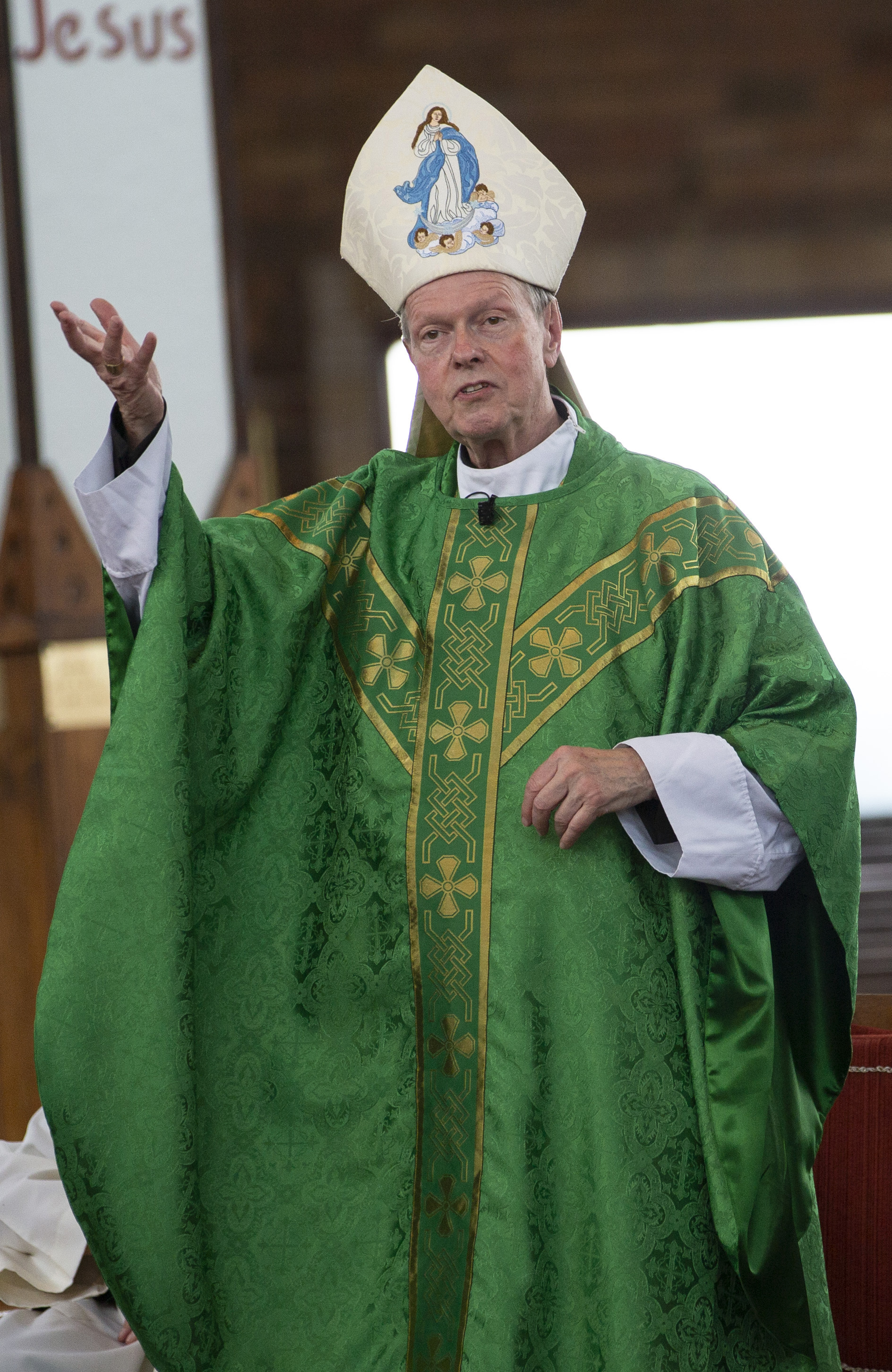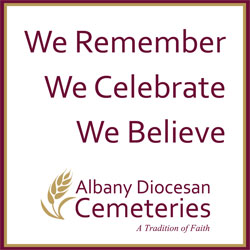April 6, 2018 at 1:53 p.m.
CHURCHES CONVERTED
New museum celebrates Italian-Americans
Although half a century has passed since the last Mass was celebrated at the original Our Lady of Mercy Church in Colonie, the building recently found new life as the home of the American Italian Heritage and Cultural Center.
"This is a real-life example of what Christ meant when He said, 'Unless a grain of wheat falls to the ground, it remains just a grain of wheat. But if it dies, it will produce much fruit,'" reflected executive director Philip Di-Novo. "This museum has the perfect home today because its life as a church came to an end when its walls were no longer large enough to hold the growing parish family."
Mr. DiNovo is convinced that "God's hands have guided this place every step of the way." A lifelong Catholic who has served in almost every lay position at All Saints parish in Albany, Mr. DiNovo also earned the title of "Cavaliere" when he was knighted by the government of Italy for service to the Italian-American community.
Director's direction
A former college professor in Utica, he is also a member of the Italian-American Folk Art Council and has written for numerous Italian-American publications across the U.S. Mr. DiNovo founded an Italian American Cultural Association to record and preserve the Italian heritage and culture in America. This year marks the 30th anniversary of the IACO, now an international organization.
Among those who visited the new American Italian Heritage Museum and Cultural Center one recent Saturday was Sister Mary Jane Manzerra, who expressed joy at the newfound use of the church where Sisters of Mercy once taught catechism.
"I think it's delightful that the church is being used for a good purpose," said the retired sister.
Noting that her parents came from Avalina and Malta Leone in Italy, she said: "It is important for people - especially the younger generation - to learn about the struggles of those who came to this country when Italians weren't exactly given an open-arm welcome. Being here today has brought back many of the stories my parents told me that I had forgotten."
Painful past
Despite their clean living and devotion to God, noted Sister Mary Jane, many Italians experienced discrimination and religious bigotry.
Visitor and retired social worker Bernadette Ambrose recalled that her grandparents arrived in the U.S. with the last name "D'Ambrosio," but were advised by an official against keeping what he referred to as "that wop name."
"You can see the hardships as you look at the expressions on the faces of the immigrant families in the photos on the walls of the museum," Sister Mary Jane remarked. The faces to which she referred are found in exhibits that bear such titles as "The Immigrant Story," "Italian-American Fami-lies," "Faith of Our Ancestors" and "Hall of History."
One display tells the story of Italian immigrants with photos and artifacts, including traveling trunks and suitcases. Other images capture Italian-Ameri-cans tending gardens and helping to build landmarks ranging from mansions and churches to railways, subways and canals.
Also showcased within the museum's walls are Italian-made tools, china, pottery, jewelry, lace, embroidery and hand-carved artifacts, including dolls and a rosary fashioned from olive pits. The museum offers a newsletter, cultural programs, outreach programs and activities.
Poet and photographer Serafina Cifarelli Wellen volunteers at the museum. Celebrat-ing her heritage today is different than some of her past experiences: Born to Italian immigrant parents, she remembered being told to stop speaking Italian and not to carry a camera in public after World War II broke out, because her family feared they would be accused of spying and placed in an interment camp.
Andrew Giovannone of Our Lady of the Assumption parish in Latham, who came to the Albany Diocese from Naples in 1963, was thrilled that the traditions of his boyhood are being preserved.
"I regret that I never taught my sons to speak Italian, but that's the way it was in those days. I am happy to be given a chance to help share the story of my homeland with others through the museum," he said with a smile.
Mr. DiNovo hopes Italian cooking classes and language classes may one day be available at the museum, but for now, he's busy raising funds to ensure the facility will remain open for generations to come.
Editor's note: By the end of Called to be Church, the diocesan realignment of parishes, 33 churches will close and most of their buildings sold. The Evangelist will periodically profile the process and some of these buildings in their new lives.
(11-19-09)
[[In-content Ad]]MORE NEWS STORIES
- Catholic novel reflects on the nature of work
- At least 20 girls missing from Christian camp after severe flooding in Texas
- President Trump signs ‘Big Beautiful Bill’ into law July 4
- Wisconsin abortion ban, Big Beautiful Bill, care for creation Mass | Week in Review
- Washington Roundup: Trump bill passes; USAID closes; concerns rise over Russia religious persecution
- Jurassic World Rebirth
- F1 the Movie
- ‘Help us escape, we can’t live here,’ pleads Damascus priest after deadly attack
- A year later, first ‘perpetual pilgrims’ describe how Eucharistic pilgrimage changed their lives
- As iconic British Catholic bioethics center closes, fellow academics dub move a ‘tragedy’







Comments:
You must login to comment.